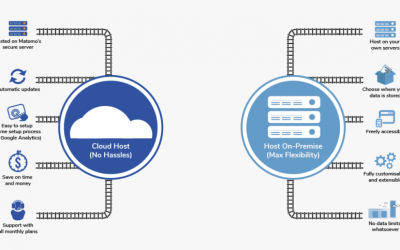Mergers and acquisitions (M&A) have become commonplace in today’s dynamic business environment, enabling organizations to expand their capabilities, reach new markets, and achieve competitive advantages. However, the successful integration of disparate IT systems and business processes remains a significant challenge. Cloud integration, with its scalability, agility, and cost-effectiveness, has emerged as a vital enabler in overcoming these integration hurdles. This whitepaper explores the role of cloud integration in facilitating seamless mergers and acquisitions, outlining best practices, benefits, and key considerations for organizations embarking on M&A activities.
Introduction
In recent years, M&A activities have witnessed a surge as organizations seek to enhance their market position, acquire new technologies, and capitalize on synergistic opportunities. However, integrating the IT systems and business processes of merged or acquired companies poses complex challenges. Cloud integration, which leverages cloud-based platforms, hybrid cloud architectures, and API management tools, has emerged as a powerful solution to streamline the integration process and unlock the potential of M&A activities.
Challenges in M&A Integration
Merging or acquiring organizations often face several challenges when it comes to integrating their IT systems and business processes:
- IT system incompatibilities and complexities: Diverse technology stacks, legacy systems, and incompatible software can hinder integration efforts.
- Data migration and consolidation: Consolidating and migrating data from different systems while ensuring data quality and integrity can be complex and time-consuming.
- Business process harmonization: Aligning business processes, workflows, and policies across merged entities requires careful analysis and synchronization.
- Security and compliance concerns: Merging organizations must address data security, privacy, and compliance requirements to maintain regulatory adherence and protect sensitive information during integration.
Cloud Integration Solutions
Cloud integration solutions provide the necessary tools and platforms to address the challenges of M&A integration:
- Cloud-based integration platforms: These platforms offer pre-built connectors, data mapping, and transformation capabilities to facilitate seamless data exchange between systems.
- Hybrid cloud architectures: Combining on-premises and cloud infrastructure allows organizations to leverage the benefits of both environments while facilitating integration.
- API management and integration tools: Application Programming Interfaces (APIs) enable the integration of different systems by exposing and managing data and functionality.
Benefits of Cloud Integration in M&A
Adopting cloud integration solutions during M&A activities offers numerous benefits:
- Accelerated integration timelines: Cloud integration enables rapid deployment and configuration, reducing the time required to integrate IT systems and processes.
- Enhanced data visibility and accessibility: Cloud-based integration provides a centralized view of data, ensuring real-time access and visibility across merged entities.
- Scalability and agility for future growth: Cloud integration supports scalability, allowing organizations to quickly adjust resources and accommodate future expansion.
- Cost savings and operational efficiency: Cloud-based solutions eliminate the need for costly infrastructure investments, while automation and streamlined processes improve operational efficiency.
Best Practices for Cloud Integration in M&A
To maximize the benefits of cloud integration in M&A, organizations should follow these best practices:
- Conduct a comprehensive pre-M&A IT assessment: Evaluate the technology landscape, infrastructure, and data repositories of the merging entities to identify integration challenges and opportunities.
- Develop a robust integration strategy and roadmap: Create a clear plan outlining integration priorities, timelines, and resource allocation to guide the integration process effectively.
- Prioritize data migration and harmonization: Develop a data migration strategy that ensures seamless data transfer, quality assurance, and synchronization across systems.
- Ensure security and compliance during integration: Implement robust security measures, encryption, and access controls to safeguard data and ensure compliance with relevant regulations.
- Foster effective communication and change management: Maintain open communication channels, engage stakeholders, and provide training to employees to facilitate a smooth transition and minimize resistance to change.
Key Considerations for Cloud Integration in M&A
Organizations should take the following key considerations into account when implementing cloud integration in M&A:
- Compatibility of cloud solutions with existing IT infrastructure: Assess the compatibility of cloud-based integration solutions with the existing technology stack and infrastructure of both the acquiring and acquired entities.
- Data privacy and governance: Establish data governance policies, data classification, and data privacy practices to ensure compliance with regulations and protect sensitive information.
- Vendor selection and due diligence: Evaluate cloud integration vendors based on their experience, reliability, security measures, scalability, and support services to choose the most suitable partner.
- Regulatory compliance and legal considerations: Consider legal implications, data residency requirements, and regulatory compliance obligations when integrating cloud solutions, particularly in industries with stringent regulations such as finance or healthcare.
Cloud integration plays a critical role in enabling seamless mergers and acquisitions by overcoming the complexities of integrating IT systems and business processes. By adopting cloud-based integration platforms, organizations can accelerate integration timelines, enhance data visibility, achieve scalability, and reduce costs. However, proper planning, strategy, and execution are crucial to successful cloud integration in M&A. Organizations must carefully evaluate their IT landscapes, prioritize data migration and harmonization, ensure security and compliance, and foster effective communication to maximize the benefits of cloud integration. Staying abreast of evolving technologies and best practices will empower organizations to drive successful integration in the ever-evolving business landscape.





